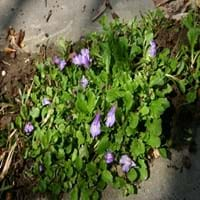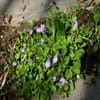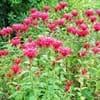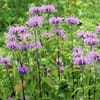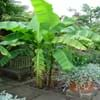Life Span
Perennial
Perennial
Type
Perennial
Bulb or Corm or Tuber
Origin
Southeastern Asia, Nepal
Southern Africa, South Africa
Types
Not Available
Cusick's camas, large camas
Number of Varieties
Not Available
Habitat
Coastal Regions, Cold Regions, Terrestrial
meadows, moist forests, Open Plains
USDA Hardiness Zone
5-8
8-10
AHS Heat Zone
8-5
Not Available
Sunset Zone
1a, 1b, 2a, 2b, 3a, 3b, 4, 5, 6, 7, 8, 9, 14, 15, 16, 17, 18, 19, 20, 21, 22, 23, 24
21,22
Habit
Mat-forming
Rosette/Stemless
Flower Color
White, Blue Violet
White, Yellow, Red, Blue, Purple, Pink, Lavender, Violet
Flower Color Modifier
Bicolor
Bicolor
Fruit Color
Not Available
Not Available
Leaf Color in Spring
Green
Green
Leaf Color in Summer
Green
Light Green
Leaf Color in Fall
Green
Several shades of Green
Leaf Color in Winter
Light Green
Light Green
Leaf Shape
Lance shaped
Long slender
Plant Season
Spring, Summer, Fall, Winter
Spring, Winter
Sunlight
Full Sun, Partial Sun, Partial shade
Full Sun, Partial Sun
Type of Soil
Loam, Sand
Loam
The pH of Soil
Neutral
Acidic, Neutral
Soil Drainage
Well drained
Well drained
Bloom Time
Late Spring, Early Summer, Summer
Early Spring, Spring, Late Winter, Indeterminate
Tolerances
Drought
Black Walnut Toxicity, Rabbit, Shade areas
Where to Plant?
Ground
Container, Ground, Pot
How to Plant?
Seedlings
chipping, Offsets, scooping, Twin scaling, Vegetative
Plant Maintenance
Low
Low
Watering Requirements
Average Water Needs, Do Not over Water, Never Over-water, Requires regular watering
Medium
In Summer
Lots of watering
Lots of watering
In Spring
Moderate
Moderate
In Winter
Average Water
Average Water
Soil pH
Neutral
Acidic, Neutral
Soil Type
Loam, Sand
Loam
Soil Drainage Capacity
Well drained
Well drained
Sun Exposure
Full Sun, Partial Sun, Partial shade
Full Sun, Partial Sun
Pruning
Prune if you want to improve plant shape, Remove damaged leaves, Remove dead leaves
Remove damaged leaves, Remove dead branches, Remove dead leaves
Fertilizers
fertilize in growing season, Less fertilizing
All-Purpose Liquid Fertilizer, General garden fertilizer, Time release fertilizer
Pests and Diseases
Insects
Pests and diseases free
Plant Tolerance
Cold climate
Black Walnut Toxicity, Rabbit, Shade areas
Flower Petal Number
Single
Single, Double, Semi-Double
Foliage Texture
Fine
Medium
Foliage Sheen
Matte
Glossy
Attracts
Butterflies, Insects
Insects
Aesthetic Uses
Beautification, Ground Cover, Landscape Designing, Showy Purposes, Used for decorating walls, fences, gates, hedges, etc.
Bouquets, Cottage Garden
Beauty Benefits
Not Available
For treating wrinkles, Remove blemishes, Skin Problems
Edible Uses
Yes
Sometimes
Environmental Uses
Air purification, Food for insects, No fertilizer, pesticides, or herbicides needed, Prevent Soil Erosion
Air purification, Forms dense stands, Very little waste
Medicinal Uses
Cough
Leucoderma, Urinary problems
Part of Plant Used
Whole plant
Bulbs, Root
Other Uses
Decoration Purposes, Employed in herbal medicine, Showy Purposes
Animal Feed, Decoration Purposes, Showy Purposes
Used As Indoor Plant
No
Yes
Used As Outdoor Plant
Yes
Yes
Garden Design
Alpine, Edging, Groundcover, Rock Garden, Wall
Bedding Plant, Container, Cutflower, Mixed Border, Rock Garden / Wall
Botanical Name
MAZUS reptans
Hyacinthus orientalis
Common Name
Creeping Mazus
Hyacinth, common hyacinth, garden hyacinth, dutch hyacinth
In Hindi
जीव Mazus
ह्यचीन्थ
In German
Creeping Mazus
Hyazinthe
In French
Creeping Mazus
jacinthe
In Spanish
arrastramiento Mazus
jacinto
In Greek
υφέρπουσα Mazus
υάκινθος
In Portuguese
Creeping Mazus
jacinto
In Polish
Creeping Mazus
hiacynt
In Latin
reptilia Alba
et hyacinthinas,
Phylum
Anthophyta
Magnoliophyta
Class
Dicotyledonae
Liliopsida
Order
Scrophulariales
Liliales
Family
Scrophulariaceae
Liliaceae
Clade
Angiosperms, Asterids, Eudicots
Angiosperms, Monocots
Tribe
Mimuleae
Not Available
Subfamily
Mimuloideae
Scilloideae
Number of Species
Not Available
Importance of Creeping Mazus and Wild Hyacinth
Want to have the most appropriate plant for your garden? You might want to know the importance of Creeping Mazus and Wild Hyacinth. Basically, these two plants vary in many aspects. Compare Creeping Mazus and Wild Hyacinth as they differ in many characteristics such as their life, care, benefits, facts, etc. Every gardener must at least have the slightest clue about the plants he wants to plant in his garden. Compare their benefits, which differ in many ways like facts and uses. The medicinal use of Creeping Mazus is Cough whereas of Wild Hyacinth is Leucoderma and Urinary problems. Creeping Mazus has beauty benefits as follows: Not Available while Wild Hyacinth has beauty benefits as follows: Not Available.
Compare Facts of Creeping Mazus vs Wild Hyacinth
How to choose the best garden plant for your garden depending upon its facts? Here garden plant comparison will help you to solve this query. Compare the facts of Creeping Mazus vs Wild Hyacinth and know which one to choose. As garden plants have benefits and other uses, allergy is also a major drawback of plants for some people. Allergic reactions of Creeping Mazus are Asthma whereas of Wild Hyacinth have Asthma respectively. Having a fruit bearing plant in your garden can be a plus point of your garden. Creeping Mazus has no showy fruits and Wild Hyacinth has no showy fruits. Also Creeping Mazus is flowering and Wild Hyacinth is not flowering . You can compare Creeping Mazus and Wild Hyacinth facts and facts of other plants too.
